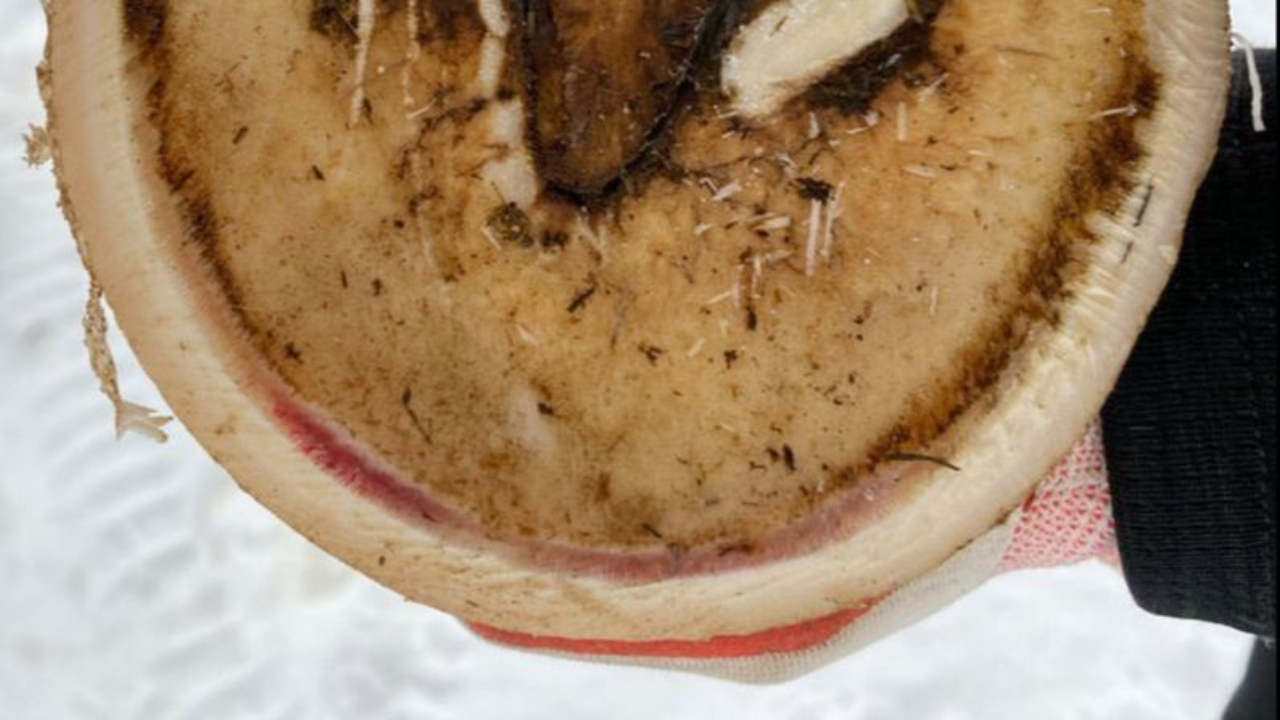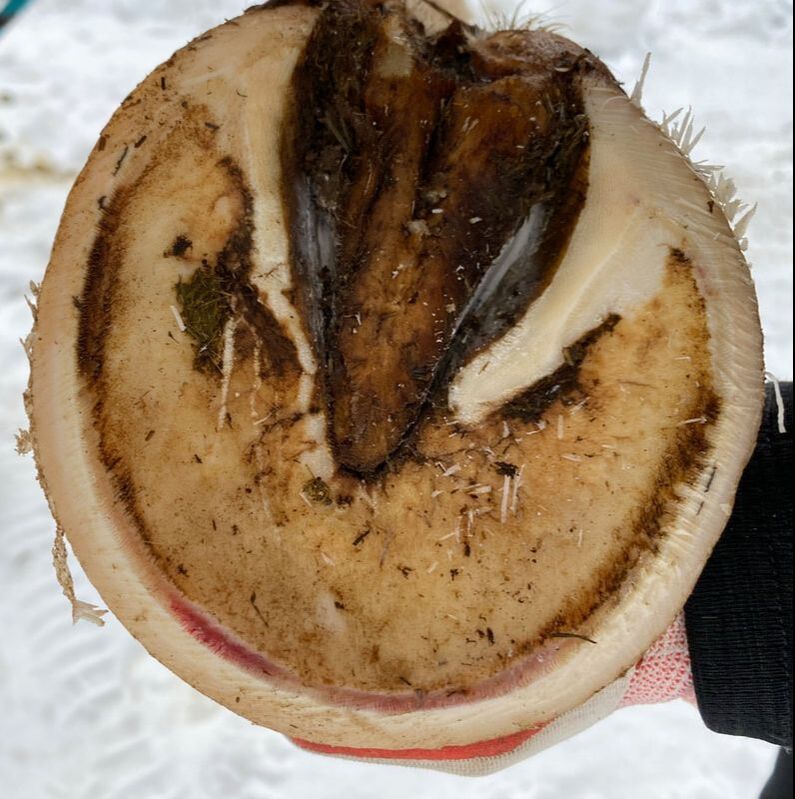Bruising in the white line and what it can it mean
Jan 03, 2021

Inevitably this time of year I get panicked calls or texts from owners asking about bruising in the white line. When horses are walking in snow and their hooves are relatively clean the bright reddish purple bruising can look quite alarming.
While this bruising can be a sign of something more serious, it is usually just caused by walking on frozen uneven ground.
Most of our domestic horses live in soft dirt paddocks or pastures and during our winters here in Western Canada, the ground will go through periods of thawing and freezing, creating soft mud one day and hard frozen lumpy ground the next. The horses adapt well and can move about awkwardly on the frozen uneven ground, but often they will take a misstep here or there and that can result in bruising of the white line as shown in the picture. This type of bruising is generally is isolated to just one hoof and doesn't generally cause soreness or lead to anything worse, but it can be alarming if you don't know the cause.
What if it's more serious? If you are seeing this bruising when the ground is not frozen and hard, or it is present in both front hooves or all four hooves equally, it could be a sign of repeated toe first landings or even laminitis (caused by metabolic conditions).
The hoof functions as a shock absorber to the rest of the body, and to work this way the horse must land heel first where all of the shock absorbing structures are located. When there is a breakdown of hoof integrity in the rear of the hoof, horses will compensate by landing toe first. As there are no shock absorbing structures in the front half of the hoof, the impact can create this bruising among other more serious complications. You can use your cell phone to take video of your horse moving at a walk and a trot and play it back in slow motion to determine how they are landing. Occasional toe first landings are normal, such as when a horse is unmotivated or travelling uphill, but repeated toe first landings on soft surfaces such as a sand arena or pasture are a red flag and should be discussed with your vet and farrier.
Laminitis can also cause this bruising and horses with metabolic conditions are at a greater risk of suffering complications during wintertime. Here in Western Canada, it is common among horse owners to try and "fatten their horses up" leading up to wintertime with the belief that they will stay warmer during our cold winter months if they have a little extra "padding". While this is true, often we ride significantly less in the winter leading to a more sedentary day to day life for the horse. This increased weight and feed regimen can lead to an obese horse in a very short timeframe and can lead to laminitis. While I am certainly not advocating for under feeding your horse during winter, I recommend you watch their weight closely and manage it as you would throughout the rest of the year. Metabolic horses are a challenge to care for and keeping an eye on the integrity of the white line can be beneficial in preventing and becoming aware of hoof issues that can lead to laminitis. Bruising can be an indication of laminitic events, even if not enough to trigger full blown laminitis. A stretched white line is an indication of a loss of hoof wall connection and should be discussed with your vet and farrier.
